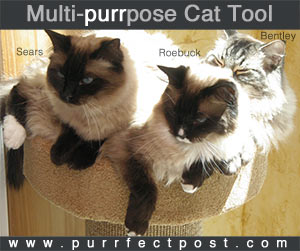How to Clean Urine Stains

Most every cat owner will have to deal with detecting the location of and cleaning up urine stains in the home.
In most cases, it is simply a matter of following your nose to the offending spot on the rug or carpet and finding the stain. Sometimes the odor is noticeable, but it seems no amount of olfactory or visual sleuthing allows you to isolate exactly from where it is emanating.
How to Find Cat Urine
When cat urine odor is observed but no spot is immediately visible, one of the best methods to determine which area needs cleaning is a black light. Black lights cause certain chemical residues from urine to fluoresce (glow) yellow or green when illuminated in a dark room.
When searching with your black light, make sure that the room is completely dark. It is much simpler to locate stains at night rather than try to darken a room during the day by drawing the curtains. In a room that is dim rather than dark, you run the risk of not noticing stains that exist but won’t glow brightly enough.
Once you have located the offending stains, there are several good methods for cleaning them up. Cleaning must be very thorough. There is no point in removing the visible stain but leaving the odor. Not only that but you must also make the odor unnoticeable to a feline nose, which is stronger than yours.
How to Effectively Clean Cat Urine
Three components of urine are; urochrome, urea, and uric acid crystals. The first two elements make up the color and the gummy, stickiness of the stain. They are easily taken away with a soapy solution.
The uric acid crystals are invisible and are the cause of the recurring urine odor. They are not removed by soap and must be dealt with using other methods.
A simple answer for carpet stains that uses common items you probably have on hand works very well for the removal of the uric acid crystals. Mix one part water to three parts of white vinegar and thoroughly wet the area. Don’t blot or rub it in. In order to encourage the solution to soak and not simply evaporate, place a heavy object on top of the stain. You can use magazines or a book on top of plastic wrap, and leave it on for 24 hours or so.
After the solution is mostly dry, use your vinegar and water again, this time mixed with three or four parts water and one part vinegar.
Once the area is dry, clean it thoroughly with a light, soapy solution, and blot it dry. The vinegar odor will dispel in three or four days.
For urine stains on tile, use a simple solution of one drop liquid dish detergent, one cup vinegar, and one teaspoon baking soda. Mix the solution until the baking soda is fully dissolved, and pour the solution on the stain. Allow it to set for 20 minutes then, using a scrub or tooth brush, scour the area until the stain is gone.
For urine stains on wood floors, a light solution of white vinegar applied sparingly can be effective if the stain is not too deep. If the stain is deeper, light buffing or sanding and refinishing may be indicated, and in extremely deep stain situations it may be best to replace the wood. Consult your hardwood floor contractor for more information.
There are some wonderful products on the market that work well for odor and stain removal on many surfaces. Enzymatic cleaners work best. Urine Off is quite effective and can be purchased in a cat formula.
Urine Away attacks odors at the molecular source and is a highly recommended product for urine stains and other cat scents.
You May Also Like These Articles:
Cat Not Using Litter Box? Inappropriate Urination in Cats
Five Reasons Cats Urinate Outside of the Litter Box
Tips for Avoiding Litter Aversion in Cats
Tips for Good Litter Box Placement
Tips for Good Litter Box Cleaning
Feline Lower Urinary Tract Disease
Notice: Ask-a-Vet is an affiliated service for those who wish to speak with a veterinary professional about their pet's specific condition. Initially, a bot will ask questions to determine the general nature of your concern. Then, you will be transferred to a human. There is a charge for the service if you choose to connect to a veterinarian. Ask-a-Vet is not manned by the staff or owners of CatHealth.com, and the advice given should not delay or replace a visit to your veterinarian.




